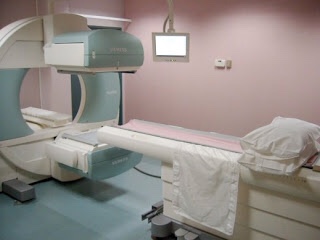
The night before Thanksgiving I received a message from my doctor. She suppected carcinoid tumor and wanted me to have an octreotide scan. At my last appointment she had ordered dozens of tests in the hopes of determining what was at the root of my most recent round of medical problems. As the test results began to pour in, some abnormalities were cause for concern. My chromagranin A and gastrin levels were elevated. These test results paired with many of my symptoms give reasonable concern for Carcinoid tumor. This is in addition to my Mastocytosis. I spoke with my hubbie, did a little Googling, made a list of ten things I was thankful for and went to sleep peacefully. That may sound strange to many of you. Why would I be thankful after learning that my doctor suppected cancer. I have walked with The LORD long enough to know that He is in the redeeming business. He has continued to show up and make things work out in ways I never would begin to think of or hope for. Whatever comes my way, I know my Savior will take care of me.
What is carcinoid tumor?
Carcinoid tumor is a rare cancer that is often nicknamed the accidental cancer. Often carcinoid is “discovered” while investigating another ailment rather that being the primary diagnosis. In fact, one in every 200-300 appendectomys reveal a carcinoid tumor. They are most often located in the GI tract and are slow growing. All neuroendocrine tumors, including carcinoid tumors, secrete hormones. However, what they secrete depends upon the type of tumor and the tumor location. These hormones can be measured with blood tests.
Chromogranin A
Chromogranin A (CgA) is a protein that is excreted into the blood and common to most neuroendocrine tumor cells, including carcinoid, and is a general tumor marker. CgA normal range is 1.9-15, mine was 328 or nearly 22 times the high level.
Gastrin
Gastrin is a hormone produced to help with digestion but can be elevated in carcinoid tumors that are located in the stomach, small or large intestines. A normal Gastrin is anything less than 100, my level was nearly 1400.
Octreotide scan

Octreotide scanning is useful to help determine a carcinoid tumor’s location, size, and extent of metastases. On the day of my test, Cheryl drove me to the hospital. We waited with anticipation not only for good test results but that the test itself would not cause any mast cell problems. Radiological tests that require dyes, contrasts, or isotopes of any kind have been problematic in the past. The last thing any of us needed right now was another anaphylactic reaction. I premedicated according to The Mastocytosis Society recommendations and prayed for the best. I informed my tech of my condition and he went to find the radiologist. When you have a rare condition, often medical providers are skeptical that you truly have what you say you do. My family, friends, Cheryl and I prayed over this test and Our Father prepared the way. When the radiologist arrived in my testing room he told me they just had an education the day before where they talked about patients with mastocytosis. Praise The LORD!! He brought several people with him and they were prepared for any possibility. I dosed again with more medication just prior to the injection. Octreotide, a mix of radioactive sailine and a synthetic hormone, was injected into my vein. After waiting to make sure there would be no complications we left the hospital for four to six hours while the octreotide circulated. As it travels through the body, it attaches to the tumor cells where it can be seen on a special imaging machine like the one pictured above. I was placed on that skinny table and slid into a donut looking ring. Two square scanners, one above and below were placed very close to me. The one on top was within one inch of my nose. I had to lay very still while to sensors picked up the radiation I was emitting. Little by little I was backed out of the doughnut creating a whole body image. The next test is similar. I was slid back into the doughnut and the two square scanners were rotated around me creating a 3D image. The tests are repeated for the next two days for a total of three days. The areas that are glowing and bright indicate where the octreotide has been taken up. On the screen I could see my kidneys, liver, and bladder along with an unidentified shape in the intestine area.
Over the last seven years I have had countless people ask me if I have cancer. My answer has always been no, I have mastocytosis, which is in the same category as cancer but instead of my body making tumors my makes too many immune cells. This makes me like a person who has a peanut allergy but to anything that can enter my body either through ingesting it, breathing it in, or absorbing it through my skin. The last few weeks have caused me to think about the possibility of having two rare disorders. Having a high immune system would certainly make me sensitive to the extra hormones that would be produced by a neuroendocrine tumor. Most of the symptoms of carcinoid syndrome mimic Mastocytosis. Could this be what has caused so many complications. According to carcinoid.org small tumors that have not spread can be cured with surgery alone. I wait with anticipation for the radiologist to read the scans, make a report and the doctors to establish my diagnosis.
Hope and healing,
Christal
But if we hope for what we do not see, we eagerly wait for it with perseverance. (Rom. 8:25) Praying with perseverance. ❤
Still waiyting in anticipation of good reports.
D Elaine Wood liked this on Facebook.
Continuing this Advent season to pray for you, your family and your medical team.
Arletta Juergens liked this on Facebook.
Alma Radenberg liked this on Facebook.
Angie Gutowski liked this on Facebook.
Prayers!